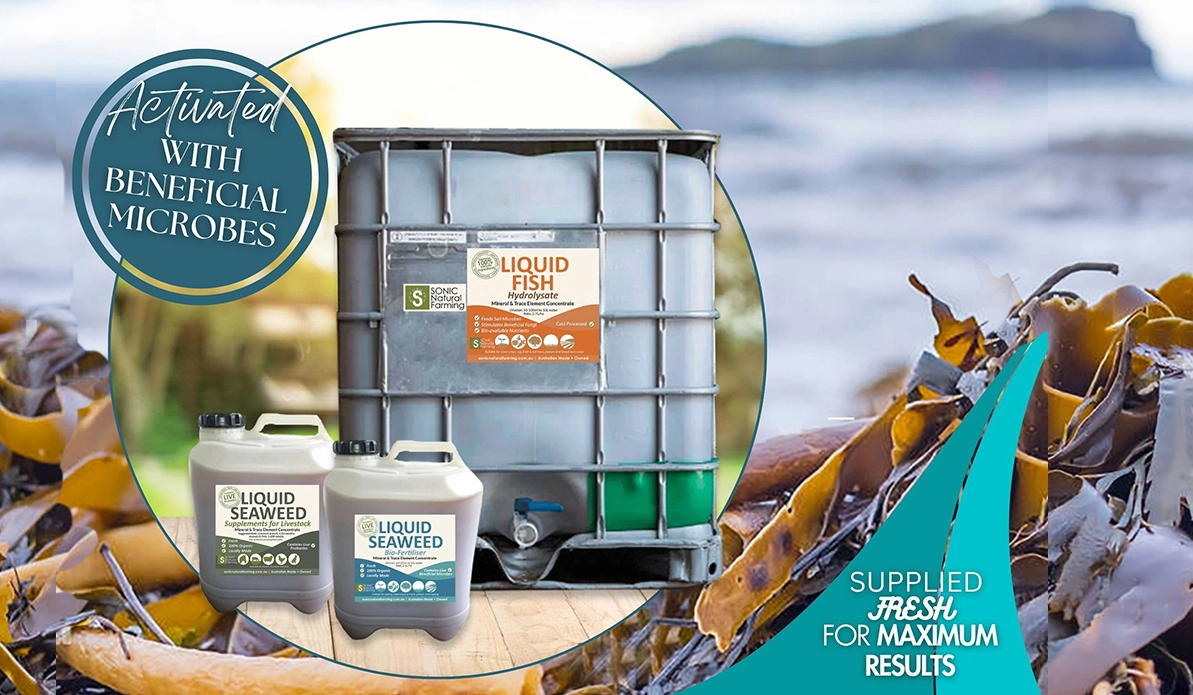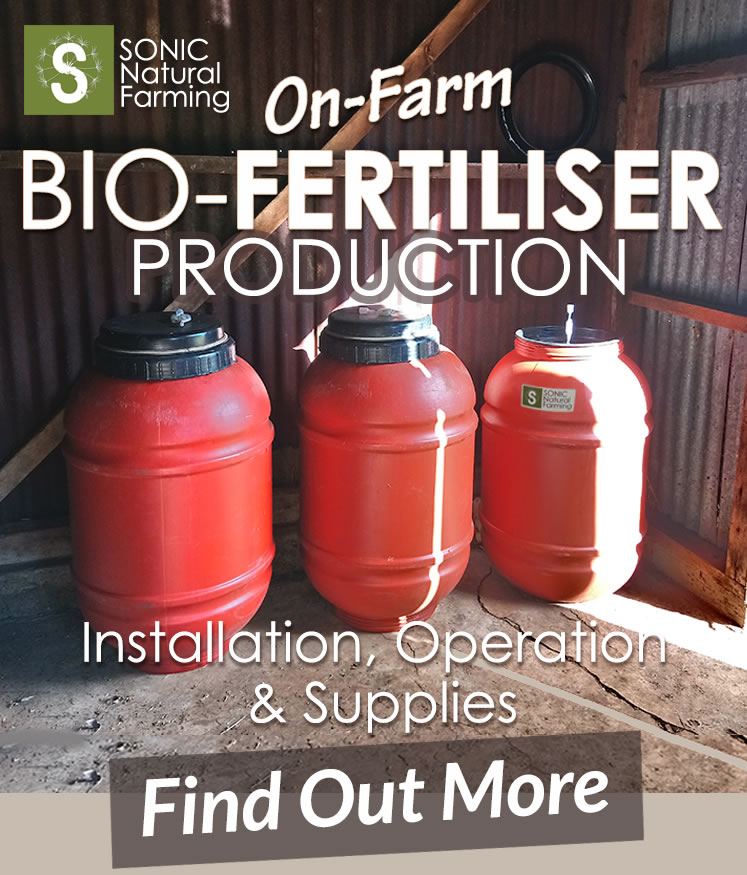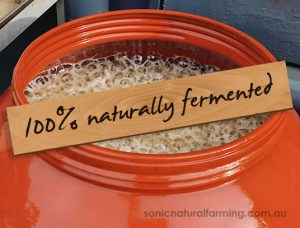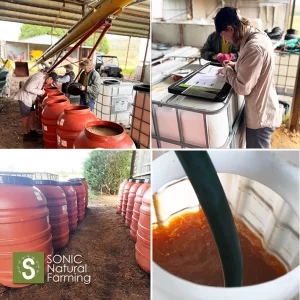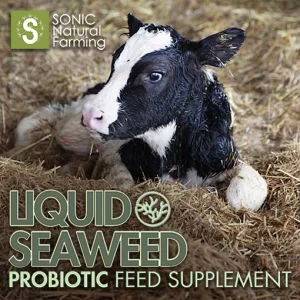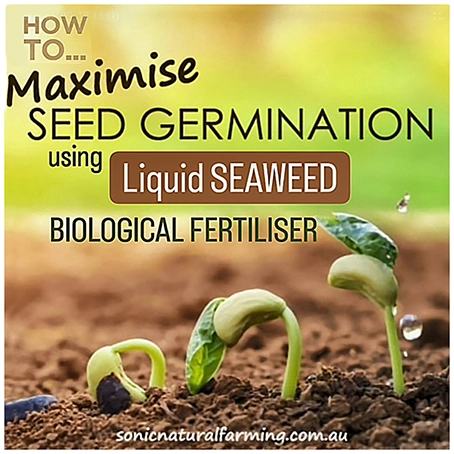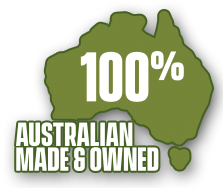In the world of livestock nutrition, silage quality plays a pivotal role in ensuring the health and productivity of your animals.
An innovative approach gaining traction among farmers is to apply biologically activated liquid seaweed on cut grass before baling. This method not only enhances the quality and nutritional value of silage, but also contributes to a better fermentation.
For those who don’t bale their own silage, spraying purchased silage or hay bales with this 100% natural solution offers an effective and eco-friendly way to boost its nutrient profile.
Let’s delve into how these approaches can benefit your operation.

Enhanced Livestock Nutrition Through Soil Care Practices
There is no doubt that the most effective way to produce nutrient-dense silage and hay is by improving your soil biology. Healthy soil is the foundation of high-quality forage, and fostering a diverse microbial network plays a crucial role in this process.
When soil is rich in beneficial microbes, it enhances the soil’s ability to deliver balanced organic nutrients to plants. These microorganisms break down organic matter and release essential nutrients in forms that plants can readily absorb. As a result, the plants are able to convert these nutrients into healthy, robust food for livestock. This not only improves the nutritional profile of the forage but also supports better plant growth and resilience.
Ultimately, investing in soil biology is key to ensuring that livestock receive the best possible nutrition from their forage.
Inoculating Silage To Enhance Livestock Nutrition
If achieving this ideal soil condition is still a work in progress, another effective alternative is to spray your cut grass with bioavailable liquid seaweed before baling.
By applying biologically activated liquid seaweed, farmers can enrich the silage with essential micronutrients, vitamins, and minerals that support livestock health.
Additionally, this treatment not only promotes beneficial microbial activity during fermentation, leading to higher quality silage. As a result, the hay not only becomes more digestible for animals but also retains its nutritional value for a longer period, ensuring optimal feed quality.
Higher nutient value means better weight gain, improved milk production, and overall animal vitality
This enhancement makes it a valuable strategy for improving livestock nutrition. Additionally, healthier animals are more resilient to disease, reducing veterinary costs and improving overall farm profitability.

Better more Balanced Fermentation
By spraying liquid seaweed on freshly cut grass, farmers can significantly enhance the fermentation process of their silage. The natural compounds in the seaweed inhibit the growth of mould, which is essential for maintaining the quality of the silage and preventing spoilage.
Moreover, the beneficial microbes introduced, through a biologically active liquid seaweed, help create a balanced fermentation environment, ensuring that the process occurs efficiently and effectively. These beneficial microbes also make the nutrients in the silage more available to livestock, improving digestibility and enabling animals to extract more energy and nutrition.
Well-fermented hay is more palatable, encouraging livestock to consume more and reduce waste
Overall, incorporating biologically activated liquid seaweed in the processing of silage is a smart strategy for optimising livestock nutrition.
Natural and Safe for Animals
Using liquid seaweed, such as SONIC biologically activated Liquid Seaweed, as an inoculant for silage, aligns perfectly with eco-friendly goals. This 100% natural product minimises reliance on synthetic additives, promoting healthier ecosystems. One of its standout features is its completely natural composition, which is free from synthetic substances or harmful chemicals.
The silage consumed is not only nutritious but also free from harmful residues that could impact animal health
By enhancing the quality of your silage with this simple, natural solution, farmers can rest assured that their livestock are consuming feed enriched with organic minerals and trace elements, which not only supports overall wellbeing but also boosts livestock nutrition.

Tackling Iodine Deficiencies
Iodine is an essential trace element for livestock. Adequate iodine levels are necessary for the production of thyroid hormones, which influence energy levels and reproductive health.
In Australia, many soils are generally low in iodine, which can lead to deficiencies in the silage, hay or fodder and, consequently, in the livestock that consume it. This deficiency can result in a range of health issues, including reduced growth rates, reproductive problems, and compromised immune function.
As a consequence, farmers need to be proactive in supplementing their livestock’s diet with iodine, either through soil remediation, mineral blocks, fortified feeds, or treatments like biologically activated liquid seaweed.
Liquid seaweed kelp is a natural source of iodine, helping to fortify silage or hay with this important nutrient. By spraying silage or hay with liquid seaweed kelp, farmers can help ensure their livestock receive iodine in their diet, supporting their health and productivity.
Iodine Deficiency in Livestock Symptoms and Effective Remedies
Cost Effective Solution
Investing in liquid seaweed to treat your own silage is a cost-effective strategy for enhancing livestock nutrition.
By improving the nutritional value of the hay, you may be able to reduce the need for additional supplements or alternative feed sources that might otherwise be necessary to meet your animals’ dietary requirements. This not only translates to lower overall feed costs but also enables you to allocate your budget more effectively.
With the enhanced nutrient profile of the treated silage, your livestock can receive a more balanced diet, minimising reliance on expensive commercial feeds
As a result, you can maintain high standards of animal health and productivity while managing your expenses more efficiently. Ultimately, this investment not only supports the well-being of your animals but also contributes to the long-term sustainability and profitability of your farming operation.
Spraying Silage Before Bailing
Australian farmers can use several types of equipment to spray cut grass in rows before baling. Common options include:
- Tractor-Mounted Sprayers: These are versatile and can be equipped with booms or spray nozzles designed for row spraying.
- Self-Propelled Sprayers: Ideal for larger fields, these sprayers can navigate rows efficiently and offer advanced features for precise application.
- ATV or UTV Sprayers: For smaller fields or tighter spaces, these all-terrain vehicles can be fitted with spray tanks and boom systems.
- Boomless Sprayers: These use nozzles to spray a wide area without a traditional boom, allowing for flexibility in row spacing.
- Precision Spraying Systems: Technologies like GPS and variable rate application systems can help target specific areas, ensuring efficient use.
- Ground Sprayers: Mounted on trailers or towed behind tractors, these can be adjusted for height and width to match the crop rows.
- Precision Application: Drones can apply liquid seaweed exactly where needed, reducing waste and minimising environmental impact.
Treating Purchased Silage or Hay Bales
For farmers who don’t bale their own silage, you can boost the quality and nutritional value of purchased silage or hay bales by spraying them with biologically activated liquid seaweed.
The best results in terms of nutrient availability will typically be seen within the first few weeks following application, as beneficial microbial activity can enhance nutrient breakdown and absorption during this period. To maximise effectiveness, it’s advisable to apply the liquid seaweed close to the time the silage or hay will be fed to livestock.
Summary
Incorporating biologically activated liquid seaweed into silage is a forward-thinking strategy for farmers aiming to enhance the quality of their forage. With its numerous benefits—from improved nutritional value to environmental sustainability—this 100% natural solution is a win-win for both livestock and the land.
For farmers who rely on purchased silage or hay, spraying it with biologically activated liquid seaweed is a practical and effective way to enhance its value. By embracing this innovative approach, farmers can ensure they are providing wholesome nutrition for their animals, while maximising the value of feed and promoting a thriving farming operation.



